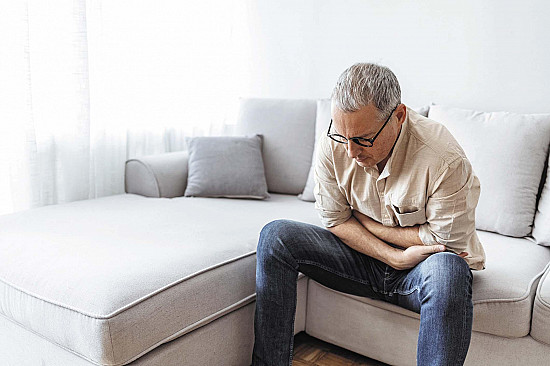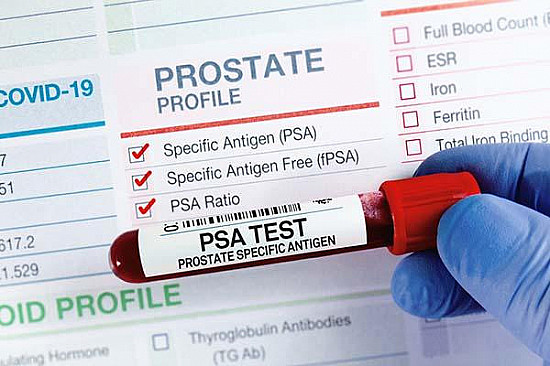Harvard experts discuss surgical options for benign prostatic hyperplasia
Benign prostatic hyperplasia (BPH) is one of the most common disorders affecting men as they grow older. Yet there is much confusion about the best way to treat this disorder surgically, in part because it seems that every year, a new surgical option is introduced.
Harvard editors invited three experts to participate in a roundtable discussion to share their thoughts about the relative benefits and risks of current surgical treatments for BPH.
| Note: Men who decide to undergo surgery to relieve BPH symptoms have multiple options to choose from. Our panel of Harvard experts discusses the most common options, which are briefly defined below. See Table 3 for a comparison of recovery rates and other considerations. |
The panel consisted of these experts:
- Dr. Kevin R. Loughlin, professor of surgery (urology) at Harvard Medical School, who is senior surgeon and director of urologic research at Brigham and Women’s Hospital and staff urologist at Harvard University Health Services, a large university health program that serves the needs of Harvard students, faculty, employees, and their families.
- Dr. Abraham Morgentaler, associate clinical professor of surgery (urology) at Harvard Medical School and director of Men’s Health Boston. Dr. Morgentaler specializes in diseases of the prostate and has a particular interest in treating erectile dysfunction, low testosterone levels, and BPH. He has published widely on the issue of erectile dysfunction.
- Dr. Martin G. Sanda, associate professor of surgery (urology) at Harvard Medical School and director of the Prostate Care Center at Beth Israel Deaconess Hospital. Dr. Sanda has extensive experience in prostate cancer and BPH and has devoted much of his professional research to evaluating prostate-related treatment outcomes and developing new therapies.
Transurethral resection of the prostate (TURP). Still the most common form of surgery, TURP is often inelegantly referred to as the “Roto-Rooter” technique. This procedure takes place in an operating room under general or spinal anesthesia. During the procedure, the surgeon uses an instrument called a resectoscope to view the prostate (see Figure 1). The surgeon threads the resectoscope through the penis to the prostate, then uses the electrical loop to cut away the overgrown tissue that’s pressing against the urethra.
Figure 1: TURP
During transurethral resection of the prostate (TURP), which is performed under general or spinal anesthesia, the surgeon inserts a thin tube known as a resectoscope into the urethra and threads it up into the enlarged prostate (A). The resectoscope contains a tiny camera, enabling the surgeon to view the prostate as the operation proceeds, and an electric loop. Using one type of electrical current, the surgeon uses the loop to chip away at the overgrown prostate tissue (B). The surgeon then applies a different electrical current to cauterize the tissue and reduce bleeding. The area is then flushed with a sterile solution to remove bits of tissue, and a catheter is inserted temporarily into the urethra and bladder until the area recovers. After surgery, the newly enlarged passageway enables urine to flow more easily (C). |
Transurethral microwave thermotherapy (TUMT). This is one of several techniques that use heat to destroy prostate tissue. In TUMT, the doctor guides a thin catheter carrying a miniature microwave generator through the penis to the prostate. There, microwaves destroy some of the prostate tissue and relieve pressure on the urethra. A cooling jacket around the generator protects the urethra. The procedure can be performed on an outpatient basis.
Transurethral needle ablation (TUNA). This is a newer thermal approach that uses low-level radio waves delivered through twin needles to heat and kill obstructing prostate cells. Shields protect the urethra from damage. This can also be performed on an outpatient basis.
Photoselective vaporization of the prostate (PVP). Although several options in laser surgery exist, our Harvard experts most often use the PVP laser technique, also known as the GreenLight laser. This uses a high-energy laser to vaporize prostate tissue that is obstructing the flow of urine through the urethra (see Figure 2).
Figure 2: GreenLight procedure
When prostate enlargement obstructs the flow of urine (A), a relatively new laser technique may be used instead of TURP. In a photoselective vaporization of the prostate (PVP), or GreenLight, procedure, the surgeon threads a thin tube known as a cystoscope into the urethra and up into the enlarged prostate. The surgeon then threads a fiber-optic device through the cystoscope to generate high-intensity pulses of light, which simultaneously vaporize the obstructing tissue and cauterize it to reduce bleeding (B). After surgery, a catheter may be inserted temporarily to allow urine to flow while the area is healing. This technique creates an enlarged, uniform channel for urine to flow through (C). |
When is it time to consider surgery for BPH?
MORGENTALER: For the most part, it really comes down to patient choice about how to handle the symptoms of BPH. The only situations that are major indications for treatment include acute urinary retention, bladder stones, maybe recurrent urinary tract infections, or a high post-void residual.
SANDA: Surgery is also worth considering if a man isn’t responding well enough to any of the drugs used to treat BPH, or if he can’t tolerate the side effects. In the past, patients really had only two options when it came to surgery for BPH. If the patient had a reasonable-sized prostate, he could undergo a TURP, and if he had an especially large prostate, then perhaps an open prostatectomy. But today a man considering surgery has many more options [see “TURP use declines,” below].
Which surgical procedures do you recommend to your own patients?
SANDA: One trend in BPH management that really has changed in the last few years is the emergence of a later generation of laser therapy that seems to be more effective than earlier alternatives. I’m referring to the GreenLight laser,* which comes close to TURP in terms of removing obstructive prostate tissue and releasing pressure on the urethra, but it’s less likely to cause bleeding and other complications.
| *Note: A first-generation GreenLight laser is discussed in this article; a second generation, more powerful laser, which can treat larger glands with shorter duration times for the procedure, has recently become available. |
LOUGHLIN: I share Marty’s enthusiasm for the GreenLight laser. I think people need to understand that a TURP is done in an operating room, with spinal or general anesthesia, and it involves a hospital stay. Treatment with the GreenLight laser is also done in an operating room, but it’s day surgery, usually with spinal anesthesia, although general anesthesia is sometimes used. There is no blood loss, and the patient either goes home with a catheter inserted overnight, or stays in the hospital overnight. Some doctors are even sending people home without a catheter, although I have not done so and would not recommend it.
MORGENTALER: I’ve become a fan of the newer heat treatments, such as microwave and TUNA, even though I started off as a complete skeptic. I think that there’s an important role for heat treatments in the surgical management of BPH, although I think it’s also important to recognize that these techniques absolutely do not replace TURP or the GreenLight laser.
Can you tell us more about why you’re enthusiastic about the heat-based techniques?
MORGENTALER: The nice thing about the heat-based treatments is that they’re done in the office. A lot of patients with BPH are treated for symptoms of bother, such as frequency and urgency of urination. In practical terms, they may be getting up multiple times in the night to urinate. Yet many of the men I treat are otherwise relatively healthy. They’re leading busy lives, and the last thing they want to think about is going into an operating room and undergoing general or spinal anesthesia. That’s always been a real stumbling block in terms of getting people to undergo surgical treatment for BPH.
How are the heat-based treatments a better alternative, in such cases?
MORGENTALER: Most men tolerate these procedures well, and when they come back for a follow-up exam four to six weeks later, they are usually quite satisfied with the results. In fact, I’ve never seen any man I treat who is as happy with a medication as he’s been with one of these heat-based treatments. Now, I should point out that I’ve seen men just as happy with the results of TURP. But for men who don’t want an operation, for whatever reason, microwave or TUNA are good options.
TURP use declinesAs less invasive surgical procedures for BPH have emerged, use of those that require hospital stays, such as TURP, have declined. In 1994, about 136,000 TURP procedures were performed in the United States; by 2004, fewer than 90,000 were performed. |
How long have you been offering these treatments?
MORGENTALER: For a year. Although the numbers of cases aren’t huge, I can say that for the majority of men I’ve treated, these treatments have produced nice results.
LOUGHLIN: One issue we haven’t discussed, but should, concerns the likelihood of having to undergo a repeat procedure. The 2003 Medicare data on BPH surgery reoperation rates indicate that TURP and GreenLight laser are basically equivalent, and if anything, the GreenLight laser seems to have a slight edge, at least in terms of the need for a repeat procedure. But the data also indicate that the repeat operation rate for people who have microwave therapy or TUNA is much higher. So essentially a person who undergoes one of the heat-based therapies is six or seven times as likely to need a second operation as someone undergoing a TURP or GreenLight laser procedure [see Table 1].
Table 1: Reoperation ratesThe federal Medicare program tracks data on the need to have a repeat operation for BPH within 24 months after a first procedure. This provides one indicator of how effective the procedures are. The figures below are based on Medicare data for 2003. |
|
| Procedure | Percentage of men who required another operation within 24 months |
| TURP | 2.2% |
| TUMT | 11.9% |
| TUNA | 14% |
| PVP laser | 2.05% |
MORGENTALER: I’m not saying that microwave and TUNA are equivalent to TURP or the GreenLight laser. They’re not. But I think a heat-based treatment can be viewed as an intermediate intervention — more effective than medication for BPH, but not as effective as TURP or GreenLight. So I think heat-based treatments are actually a wonderful advance, in that they can be performed in a doctor’s office, involve less fear on the patient’s part, and have nice results, in my experience.
LOUGHLIN: I agree that a patient needs to understand that a TURP is going to require that he be in an operating room. It also involves longer recovery than microwave or TUNA. But, to me, the 2003 Medicare data are extremely persuasive, in that you’re looking at a 2% reoperation rate versus a 12% to 14% reoperation rate.
What other factors might influence a patient’s choice of surgery for BPH? Or the recommendation that you make as doctors?
LOUGHLIN: A real dilemma for urologists is that if you look at reimbursement rates, there’s about a seven-to-one financial advantage in doing an office-based procedure. If a doctor recommends a TURP or GreenLight laser, it’s done in the operating room. That means the urologist gets about $500 in reimbursement, to use a ballpark figure. If the urologist does a TUNA or a microwave in his office, he’ll get a lot more. That’s a real issue sometimes.
Good point. The Journal of Urology included a study three years ago about the way reimbursement rates affected treatment recommendations for BPH as well as for other conditions [see Table 2].
Table 2: Reimbursement mattersMedicare is the nation’s largest health insurance provider, serving roughly 40 million Americans (mainly those 65 and older). As such, changes in Medicare coverage and reimbursement policies have an enormous impact on the practice of medicine. A 2004 study in the Journal of Urology found that Medicare reforms implemented in the 1990s significantly reduced reimbursement rates to urologists for surgical procedures done on an inpatient basis, while increasing rates for outpatient procedures. For example, in 1986, Medicare reimbursed urologists $998 to $1,830 per TURP, depending on their geographic location; in 2004, the reimbursement had fallen to $704, regardless of geography. Medicare also reimburses particular procedures differently, depending on whether they are performed in a physician’s office or in an operating room, as shown in the chart below. |
||
| BPH surgical procedure | Medicare reimbursement | |
| Performed in operating room | Performed in physician’s office | |
| Transurethral thermotherapy (another name for microwave treatment, or TUMT) | $552 | $4,272 (gross)* |
| Transurethral needle ablation (TUNA) | $585 | $4,098 (gross)* |
| *This does not cover the cost of disposable items, which can be more than $1,000 per procedure, and other overhead costs, so net reimbursement is less.Source: Lotan Y, Cadeddu JA, Roehrborn CG, Stage KH. The Value of Your Time: Evaluation of Effects of Changes in Medicare Reimbursement Rates on the Practice of Urology. Journal of Urology 2004;172:1958–62. PMID: 15540765. | ||
Are there any questions we should have asked about surgical treatments for BPH that you think are important?
MORGENTALER: I think an important issue is, what happens if somebody doesn’t want to undergo treatment for BPH?
Excellent question. What’s your answer to that?
MORGENTALER: The studies suggest that for many men, the urinary symptoms and overall bother of BPH really wax and wane over time. One review found that one-third of men who forgo treatment eventually report feeling better, and if there is an improvement it usually occurs in the first six months. So if some men choose to put off treatment, I think that’s a valid option.
LOUGHLIN: Some men may want to avoid surgery because they’re too frail to risk blood loss, side effects from anesthesia, or complications. If a patient is that brittle, the best option may be to manage his symptoms with medication and with a catheter if necessary.
Table 3: BPH surgical procedures compared |
|||
| Procedure | What’s involved | Success rates | Side effects |
| Transurethral resection of the prostate (TURP) |
|
Provides symptom relief in 70%–85% of men treated |
|
| Photoselective vaporization of the prostate (PVP or GreenLight) |
|
Improvement in symptom relief similar to TURP |
|
| Transurethral microwave thermotherapy (TUMT) |
|
More effective than medication but less effective than TURP |
|
| Transurethral needle ablation (TUNA) |
|
More effective than medication but less effective than TURP |
|
Originally published April 1, 2007; last reviewed April 26, 2011.
About the Author
Disclaimer:
As a service to our readers, Harvard Health Publishing provides access to our library of archived content. Please note the date of last review or update on all articles.
No content on this site, regardless of date, should ever be used as a substitute for direct medical advice from your doctor or other qualified clinician.

















